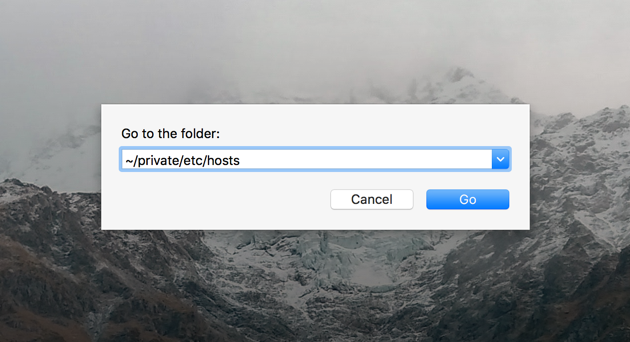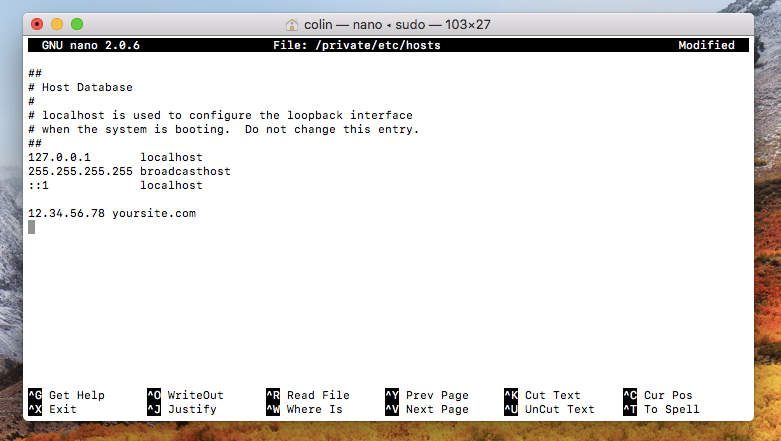

- #Edit host files for mac how to#
- #Edit host files for mac mac os x#
- #Edit host files for mac software#
- #Edit host files for mac password#
- #Edit host files for mac license#
#Edit host files for mac password#

#Edit host files for mac software#
Latest updates on everything Hosts Manager Software related. Featured Hosts Manager free downloads and reviews.

# localhost is used to configure the loopback interface HostsMan is a free yet powerful and comprehensive tool for managing, merging, updating, disabling, editing, protecting, and duplicating hosts files from a single interface. Press Control-X and then answer Y to save the changes. Navigate through the file using the arrow keys and append your new mappings underneath the existing ones. Open the hosts file by typing the following into the terminal window: sudo nano /private/etc/hosts. Open Applications > Utilities > Terminal. Editing the hosts file on a Mac is done using the Terminal app.
#Edit host files for mac mac os x#
Paste the following into the same file: # These instructions apply to Mac OS X 10.6 through 10.12.
#Edit host files for mac how to#
The Domain Name System and its associated cache is your Mac's standard way of knowing how to get to where it's going on the Internet, but there's another file that can be very useful. Your Mac builds up a hidden cache file to remember those details later on when you visit the same site again.

The first time you type in a web address, your Mac pings a DNS server - typically one automatically configured for you by your Internet Service Provider - to find out the TCP/IP address of the server you're trying to connect to.
#Edit host files for mac license#
A Cleaner Configurationīefore I being, I assume you already installed and configured Apache on Mac OS X.įirst, open the Terminal app and switch to the root user to avoid permission issues while running these commands.VPN Deals: Lifetime license for $16, monthly plans at $1 & more To do that, you need to configure virtual hosts. Primarily, we would rather access the site using a name like somesite.local. You could mimic multiple sites by creating subdirectories and access a site at localhost/somesite. This is essentially a single site configuration. The term Virtual Host refers to the practice of running more than one web site on a single machine.īy default, the Apache configuration on Mac OS X serves files from /Library/WebServer/Documents accessed by the name locahost. What are Virtual Hosts?įrom the Apache Virtual Host documentation: In the same amount of steps (two), you can adopt a more manageable configuration. Furthermore, Apache configurations often get reset when upgrading Mac OS X. To mountaindogmedia's point, this becomes difficult to manage. Over the years, I have created many virtual hosts. You need to edit the Apache configuration to include this file and enable virtual hosts. In fact, this is the default configuration for many servers.īy default, the Apache Virtual Host configuration on Mac OS X is located in a single file: /etc/apache2/extra/nf. Indeed, mountaindogmedia, this is an easier way. I think it would be easier to manage host files and changes. Jason, have you tried a modified Include statement for virtual hosts to map a directory? So instead of /etc/apache2/extra/nf as indicated, one would use /etc/apache2/extra/vhosts/*.conf and then just create a nf for the first virtual host, and then add/edit/delete vhost files as needed. Mountaindogmedia left the following comment on my post for installing Apache, PHP, and MySQL on Mac OS X:


 0 kommentar(er)
0 kommentar(er)
